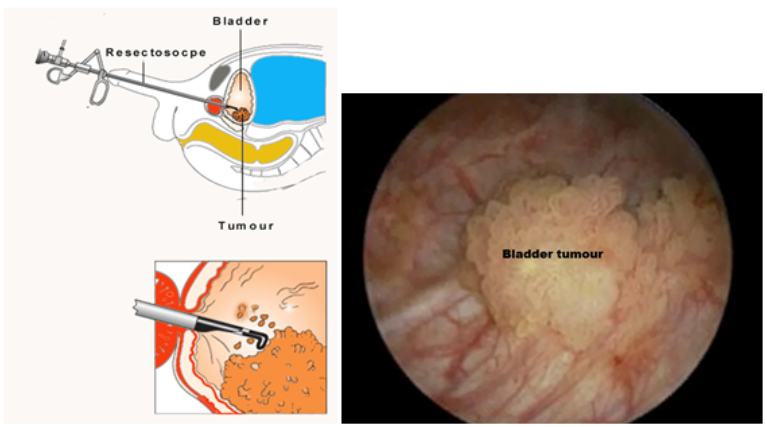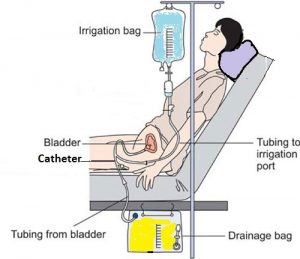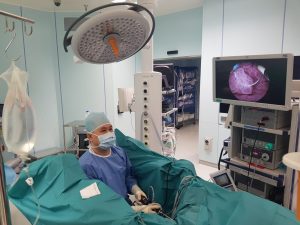
Transurethral Resection of Bladder Tumour (TURBT)

Transurethral resection of bladder tumour (TURBT) is the endoscopic removal of tumours inside the bladder. Most bladder tumours are cancerous and have to be completely resected to prevent recurrence and to determine its stage. This is determined by taking separate biopsies from the tumour base while the risk of recurrence is determined from bladder biopsies. Accurate sampling is important as the subsequent treatment depends on the staging. As the bleeding can be excessive, any blood-thinning medication, such as aspirin or Plavix must be stopped 1 week beforehand.
How it is done
Under general or spinal anaesthesia, a resectoscope (loop-cutting instrument) is passed through the urethra. The whole tumour is resected down to its base. Biopsies are then taken from the base to see if it has invaded into the bladder muscle. Random biopsies are also taken from the rest of the bladder to exclude pre-cancerous areas (known as CIS). A catheter is inserted into the bladder after the surgery for irrigation and to prevent blood clots from forming. The operation takes up to 1 hour. Hospital stay is 2 to 3 days.

Watch video on TURBT surgery
Bladder irrigation after TURBT surgery
Chemotherapy e.g. mitomycin C is also instilled after the surgery to reduce cancer recurrence.

Dr Chin doing TURBT surgery
Complications include:
- bloody urine. Even after the catheter is removed, bloody urine can be expected to last up to 2 weeks.
- perforation of the bladder during resection. If this happens, urine can leak out of the bladder. If the perforation communicates with the abdomen cavity, emergency surgery is needed to repair the hole in the bladder
Desired outcomes:
- no blood transfusion ( < 3% chance )
- no bladder perforation ( 1% risk )
- no recurrences (70 – 80% chance)